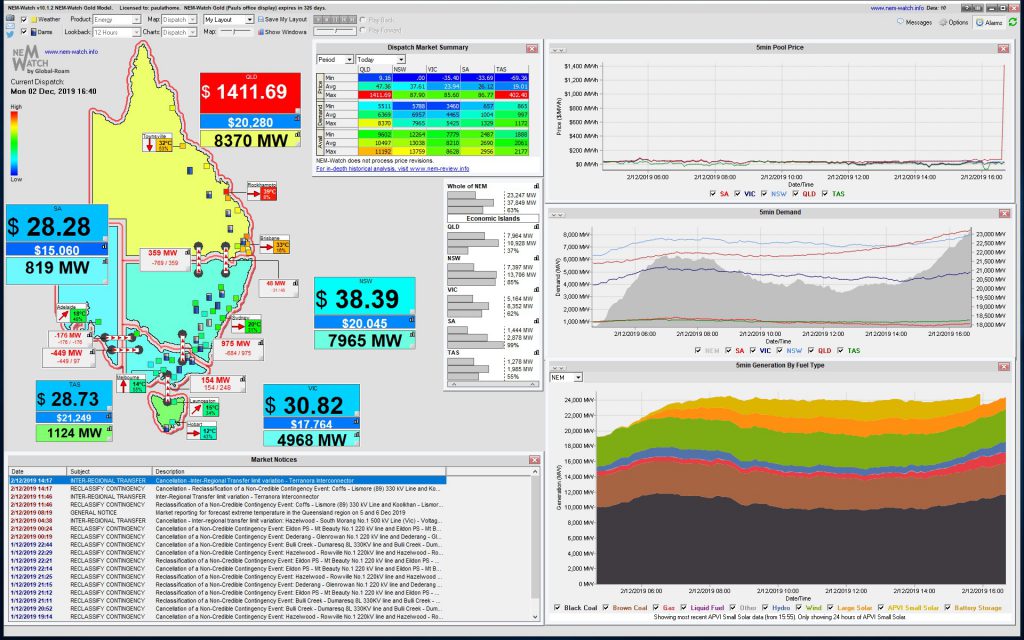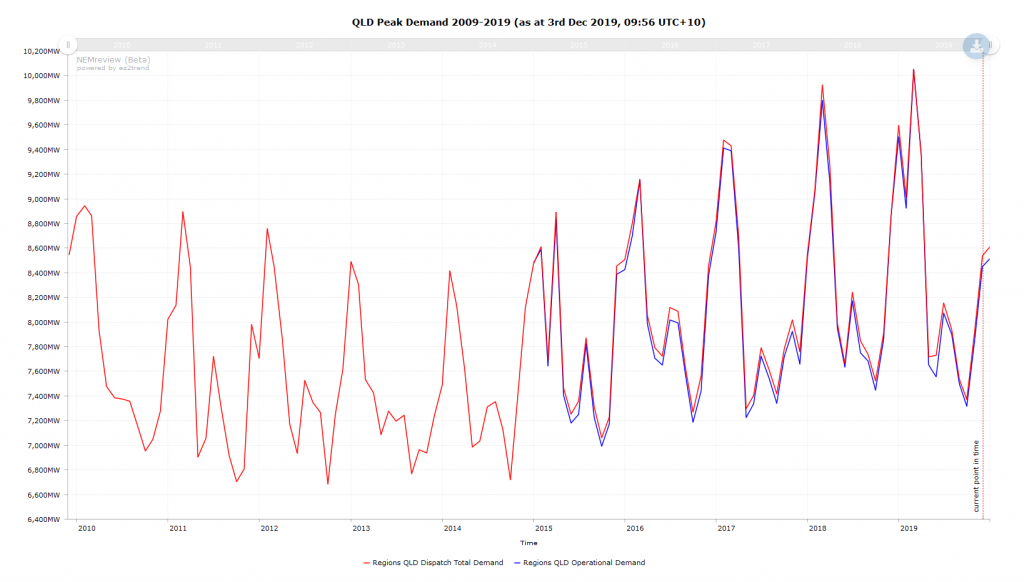On just the second day of the summer, Queensland has had it’s first price spike of the season. As seen in the screenshot from NEM-Watch v10 below, the spot price for the state hit $1,411.69 for the 16:40 interval on Monday afternoon.

From our quick initial investigation, it seems that intervention pricing was in effect during the interval, and that the OAKEY1 unit set the price but was not dispatched – if time allows we will look to publish more analysis on this interval.
The price spike occurred while total demand for the state reached 8,370 MW. The record for peak total demand in QLD is 10,052 MW which was set in March of this year. Looking at the chart we’ve made in NEMreview v7 below, we can see that peak demand in Queensland has been rising steadily over the second half of the past decade, with the record for peak demand being broken in each of the past four consecutive summers. We will be watching closely to see if this mark is surpassed again this summer.



I think that low point this year tells a story, my guess is that rooftop solar have started to impact, and have created a lower low than the year prior. So there is a chance, the high will also not meet last years high.
However, weather will play the bigger role this year, but going forward in time, both the lows and the highs should track lower due to rooftop solar/ batterys?.
John, batteries are generally fully charged by 10am and fully discharged by the afternoon. The effect of batteries is therefore to accentuate the duck curve.
This is due to the default charging/discharge curve. An optimised curve would spread the charge over longer to help with the trough and delay the discharge to help with the peak.
Long way to go with batteries.
Hi Ben,
Is it not just a matter of putting more Batteries in and we have all the power we will ever need?
Aunty has been running a series on power problems and challenges with the grid and the obvious for summer is airconditioning demand management-
https://www.msn.com/en-au/news/other/power-companies-will-soon-be-paying-you-to-cut-your-energy-use/ar-BBXLRSN
Either that or peak pricing which makes you wonder how we’ll handle the EV revolution supposedly replacing our current mode of transport. Most will want to charge them at home at night but the solar duck curve suggests they should be charged during the middle of the day-
https://www.abc.net.au/news/2019-12-01/rise-of-rooftop-solar-power-jeopardising-wa-energy-grid/11731452
Interesting that the penny is beginning to drop with Aunty that something does not compute with aspirations vs reality when you want to change the climate or perhaps just hold the fort on that.
Hello Observa, I thought all the cars were going to be charged during the day, so the batteries in them could be used at night to power the grid. Or at least when there was not wind or sun for a few days?